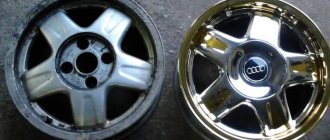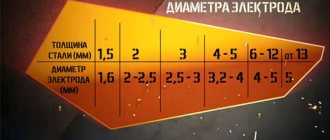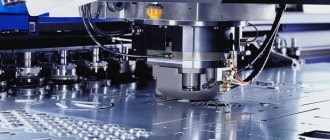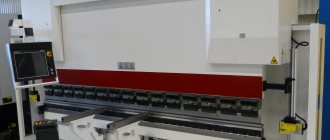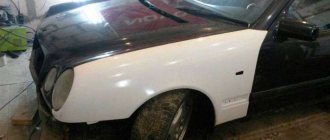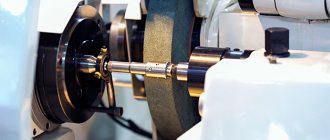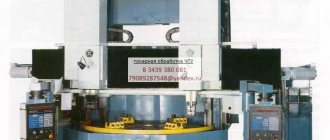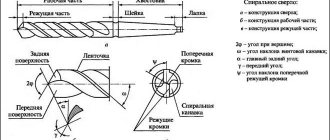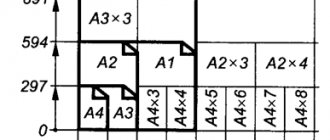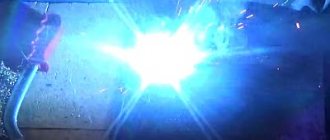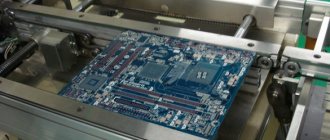What is a silent block
This word is of foreign origin. Translated from English, silent means silence, and block means detail. A silent block, or simply “silent,” is a rubber-metal component; in ordinary words, these are two bushings that are connected to each other by a layer of durable rubber. This invention, in addition to guaranteeing comfortable and silent movement in a car, has a number of advantages that will be listed below.
Purpose and functions
Silent blocks perform the following functions:
- Protect components from wear and tear by damping vibrations .
- They dampen vibrations that come from the chassis of the wheels, thus providing a comfortable and soft ride.
- Prevent vibrations and beatings that appear during the movement of the car between different elements of the chassis and engine compartment.
And these are just the main advantages; in fact, there are many more.
How to understand when it's time to replace
Before you set out to press in these parts, you should first of all inspect them thoroughly to make sure that they really require replacement. Check for holes and any deformations, for swollen rubber on the hinges and for cracks. Manipulate the components, determining the presence of backlashes. If the permissible norm is exceeded, then replacement of parts is inevitable. It is not recommended to delay the pressing procedure. Over time, this problem will only get worse and can lead to suspension arm failure.
The main indicators that indicate the failure of one part or several:
- Driving the car has become much more difficult.
- When overcoming bumps, the suspension begins to knock loudly. Tires wear unevenly, which has not been observed before.
- It has become much more difficult to adjust wheel alignment.
Necessary materials
To press this part into place at home, you will need the following tools:
- Mount;
- Jack;
- Set of wrenches;
- New hinges.
It is recommended to use machine oil or other types of lubricant as a lubricant.
Among other things, you will need special mandrels designed for pressing silent blocks; as an alternative, you can use a piece of pipe with the required diameter. You also need to get a press to press in a new rubber-metal hinge . When it comes to home use, an ordinary vice can serve as a press. In addition, you can stock up on a set of sledgehammers, but with this approach it is necessary to maintain high precision in the work.
Home use options
The use of a hydraulic press in a garage or home workshop is quite common. This type of press, which is small in size, can be used both for car repairs and for other types of work.
In particular, with the help of such compact equipment it is possible to press out bearings or silent blocks, as well as press new parts in their place. In addition to automotive repairs, a hydraulic press can be used for bending metal parts, creating the required pressure when gluing surfaces, briquetting waste, and squeezing out oil and liquid. Factory equipment for this purpose (even a manual hydraulic press) costs a lot of money, and not everyone can purchase it. Meanwhile, you can make such a press with your own hands, spending only money on purchasing the necessary materials.
Using a press as a juicer
Pressing out at home
Replacing these parts is not as difficult as it might seem at first glance. For example, many car owners made sure of this when they replaced parts, using special equipment for self-replacement. It is for this reason that there are many people who have decided to replace silent blocks with their own hands and at home.
First method
First of all, let's learn about how it should be ideally.
The lever in which the rubber-metal hinge needs to be replaced is installed on a special spacer for the press. The old silent will be squeezed onto this spacer. Then another spacer is installed on top - it squeezes out the old bushing. This method is used by service station workers, since they have the necessary set of spacers and a powerful press of 10-20 tons.
Second method
Almost all car owners, naturally, do not have a powerful press, but many have a jack or a good vice in their garage. If you use a powerful vice, you can successfully squeeze out the old bushings according to the principle that is already familiar to us: a spacer for the original bushing and a spacer for pressing on the bushing.
Read also: Lm317t current stabilizer circuit
At first glance, it becomes unclear how you can squeeze out the silent tape with a jack? Everything is very simple: you need to weld a frame in the shape of a rectangle from a channel or corner so that its height is slightly higher than the lever and the jack. The operating principle is as follows: place the jack in the frame, then install the lever eye on top of the rod, as well as the two spacers mentioned above. We create the required pressure, after which the bushing is squeezed out of its seat. It must be emphasized that most often a jack with a capacity of 3-5 tons is not able to cope with such work, therefore it is recommended to use 10-ton jacks.
Third method
If you have neither a press nor a jack, but still have a strong desire to replace the silent blocks on your own, you can use the third method - using a simple press puller (bolt with nut or stud).
The principle of operation is to create pressure by gradually tightening the nut on the stud; this method can be called an analogue of a vice. This pin with a washer of suitable diameter is inserted into the eye through the silent block, then on the other side you should put on a spacer with a washer and tighten the nut. Rotating along the thread, the nut creates the necessary pressure and forces the silent to be squeezed into a special spacer.
This “method” requires the use of a strong, hardened stud and an equally strong nut. If you take a soft pin or nut, you will most likely fail. For example, there are cases when, due to strong pressure, the stud becomes bent, as a result of which the thread on the nut breaks. However, there are thousands of those who managed to change silent blocks using this particular method. After all, everything depends on the quality and strength of the material used.
The advantage of this method is its low cost, as well as its convenience, if you look at it from the “mobility” point of view. In other words, you don’t need, for example, to completely remove the lever or the entire hub; it will be enough to just have a simple press puller like this.
Fourth method
This method can be classified as drastic decisions or extreme measures. Its principle is to use all popular methods and devices to extract silent from the seat. To do this, you need to knock out the old part using a powerful screwdriver or a thick wedge-shaped piece of reinforcement. You need to try to hammer a screwdriver or something between the silent block and the bushing, thus deforming the wall of the bushing inside. Now that the bushing is crushed and pushed inward, it is not at all difficult to knock it out. Before you start knocking out the silent block, you need to squeeze out or burn out the inner sleeve of the part and, if possible, all remaining rubber.
Fifth method
The next method of removing a silent block cannot be called pressing out, since it, like the previous one, does not require the presence of a press: all you need is a metal blade, a hammer and a screwdriver. The principle is simple, but unsafe. We remove the inner sleeve, then take the blade and start cutting the outer sleeve. Try to cut through the old silent as much as possible without damaging the lever itself or the eye. It is best to make two cuts, and then using a flat screwdriver, the silent block will be easily deformed and knocked out.
If none of the methods listed above helped, and you still need to do it, there is only one option left - to entrust this work to specialists. To achieve the desired result, take the part and go to the service station, where specialists, using a silent block extractor and other special tools, will qualitatively do all the necessary work “in the blink of an eye.”
Development of a hydraulic press design for pressing bearings
The main objective of this design development is to manufacture a stand for disassembling and assembling press-fit connections, allowing disassembly and assembly work (press-fitting) to be carried out quickly, accurately, efficiently and without causing damage to health.
To solve this problem it is assumed:
- develop a simple design of a stand for disassembling and assembling joints with interference fit, which can be manufactured in a repair workshop;
- theoretically substantiate the main parameters of the stand;
- make strength calculations.
Pressing out and pressing in parts of units is carried out using improvised means, which reduces the quality of repairs and increases its cost. In order to improve the quality of repairs and reduce costs, it is necessary to use devices for disassembling and assembling press connections, for example, hydraulic presses.
Hydraulic presses with a jack are most suitable for this type of work, because... they are simple and easy to use. Jacks are devices designed to lift a load to a small height (up to 1 m) by acting on it from the bottom up. The jack 7 is suspended on springs 5. Depending on the dimensions of the unit being serviced, the service area of the jack changes by rearranging the traverse 2.
Work on the press is carried out as follows. Taking into account the overall dimensions of the unit and the possibility of using the jack's stroke, cross-beams 2 with support 10 are rearranged on the frame. The support is secured to the cross-beams using a bolt and nut. The jack is operated by a handle. When the handle is moved up and down, the jack body and punch 9 move down. The punch is always centered on a bushing that is pressed into the top sheet of the press frame. The jack is returned to its original position by springs 5.
Disassembly of connections with guaranteed interference (removal of pulleys, rolling bearings, bushings, pressing out of pins, pins) is carried out by applying axial force using pullers, presses and special devices. To select pressing equipment and when designing special devices, we determine the amount of force required to disassemble a particular connection of parts.
To enable the press to press in bearings, it is necessary that the following condition be met: the pressing force of the bearing must be less than the maximum force developed by the press.
Hydraulic press for pressing bearings General drawing
Detailing of a hydraulic press for pressing bearings
3 Design development 50
3.1 Justification of the need for design development 50
3.2 Design and principle of operation of a hydraulic press with a jack 54
3.3 Technological map for repairing a truck axle shaft 56
3.4 Strength calculations of a hydraulic press with a jack 56
- 3.4.1 Calculation of the force of pressing out the bearing from the axle shaft 57
- 3.4.2 Strength calculation of the rod for crushing 58
- 3.4.3 Strength calculation of the press traverse 59
Explanatory note 12 pages of calculations and descriptions, specifications.
Pressing in silent blocks
We have already talked in detail about how to get the “silents”, now another problem arises - how to press this part? This procedure is difficult because it requires certain skills and abilities. An incorrectly or crookedly installed silent will either not work or break prematurely.
First method
As with pressing, pressing should ideally be done using a vice. The principle is somewhat similar, but just the opposite. Before pressing the part, you need to thoroughly clean the seat from any residues and rust from the previous silent using sandpaper. Then the eye is generously lubricated with a lubricant like “Litol” or with a soap solution. A lever is installed, the part is placed on top, after which press pressure is applied to the spacer through a special mandrel. It will press the part into the seat.
Read also: How to check how many amperes are in a battery with a multimeter
Second method
When you do not have a press, you can press the part using the above-mentioned jack or a vice. The principle of operation is no different from a press. The lever, bushing, and spacer are installed. Then, under the force of a vice or jack, the part is pressed into the seat.
Third method
Press puller. If the silent block is small, you can “put it in its place” using the same press puller that was used to press the part out of the socket. Again, the principle is the same, only a thick washer and a pin are used as a press.
Fourth method
Using a sledgehammer and brute force. This method is not the best of all existing ones, since it is considered more from a purely theoretical point of view. In other words, it really allows you to press a part, but it’s very difficult to say what the results and quality of work will be. The principle is quite simple: we take a lever, put a silent on it, and then hit it quickly and hard.
After such a strong impact, it should go into the ear of the lever. Only the main drawback of the method is that it is not so easy to predict the correct movement of a given part; it can fit crookedly into the landing site. Among other things, “biting” of the rubber components may occur and damage to the lever itself or the silent block. Simply put, the blow is very difficult to control, and often after this kind of “experiment” you have to turn to specialists and redo everything again. Therefore, think carefully about the possible consequences before using this method.
Fifth method
The last known method of pressing a silent is to use the weight of the car. The principle is to use the weight of your car for personal gain. It all happens like this: install a hydraulic or screw-shaped jack and remove the wheel. Then install the lever with the silent, which needs to be pressed, under the hub.
Then we level everything thoroughly and begin to slowly lower the jack. In this case, it is recommended that you have someone help you. The weight of the machine will be quite enough to firmly press the part into the landing site. The disadvantage of this method is that it is inconvenient and somewhat unsafe; in addition, it is not so easy to control whether the part is correctly seated in the socket. But when you have no other option, the method is well worth considering.
Each method is effective and interesting in its own way. Consider for yourself all the pros and cons of each method to make sure you decide.
Types of wheel bearing pullers
Study the summary table, which presents several main types of BSC, as well as specific recommended models.
| Type and model | Application | Average price, rub. |
| With 3 legs | Removing parts from axles and shafts, including rear hub ball bearing races. | 2000-3000 |
| With 2 legs | Removing parts from axles and shafts, including rear wheel hub bearings. | 1000-2000 |
| Cup with a set of mandrels | Removing and pressing parts into holes, including steering knuckles and front wheel hub bearings. | 6000-8000 |
What pullers are needed to remove and press in wheel bearings?
For the front and rear wheels, it is recommended to use two types of tools: with three or two legs and a cup puller - this is the minimum set of removable tools for the correct and safe removal and pressing of parts of hub units.
Wood and metal processing
A fixed connection of two parts by pressing one into the other, providing a strong connection without additional fastening, is called a connection with guaranteed interference.
The essence of this method is that the male part has a diameter larger than the female hole. Such a connection provides guaranteed tension, since adhesion forces arise that prevent the relative displacement of the mating parts.
Pre-interference connections can transmit torques, axial forces, or both.
In assembly shops, parts are pressed into place using manual, hydraulic and pneumatic presses. Pressing with a press is performed at first slowly and with little force, and at the end the pressed part is pressed sharply so that it fits more tightly into place. At the same time, make sure that there is no distortion.
For pressing large parts, various horizontal and vertical presses with hydraulic and pneumatic drives are used.
Pressing of small parts into heavy large housings in hard-to-reach places is carried out using pneumatic and hydraulic, as well as manual screw jacks and other screw devices, which require relatively little effort on the part of the worker and ensure smooth and reliable pressing.
The process of joining parts by heating the female part or cooling the male part is based on the fact that when heated, the female part expands, while the male part contracts when cooled, as a result of which it is easier to fit one part onto another.
In connections made using this method, tensions are created twice as much as in conventional press connections, and the strength increases approximately three times. This happens because in this case the unevenness of the mating surfaces are not smoothed out, but seem to adhere to each other, increasing the strength of the connection.
Read also: Metal fence for a private house
Parts are heated in oil, in heating furnaces, high-frequency current, gas burners, furnaces and other methods. Of the methods used, the most widespread in mechanical engineering is heating parts in oil. This is explained by the simplicity of heating installations. In addition, oil does not need to be removed from the surface of heated parts, as it improves pressing.
The heating temperature of the parts, as well as the amount of interference, is set by the technical conditions for assembling the connection. In cases where the female part is very large and it is impractical to heat it, the male part is cooled.
Typically, pressing by cooling the male part is used for small thin-walled parts. For cooling, liquid air, oxygen or nitrogen are used, giving a temperature difference of up to 473 K (200 °C), as well as solid carbon dioxide (dry ice), giving a temperature difference of up to 373 K (100 °C).
The pressing method using active lubricant is used. This method consists of applying powdered molybdenum sulfide to the mating surfaces of the parts, as a result of which pressing requires less effort and no scoring occurs during disassembly.
Parts for pressing must have the correct geometric shape (ellipse in cross-section, taper in length, etc. are unacceptable). Deviation from the correct shape of parts not only affects the pressing force and possible distortion of parts after pressing, but also affects the operation of machines. Thus, pressing rolling bearings onto parts with elliptical seats leads to distortion of the shape of the bearing rings, increases the pressure on the balls and causes faster failure of the bearings, as well as increased noise at high speeds.
TO
category:
Motor grader repair
P
publication:
Techniques for pressing and pressing, removing broken fasteners
H
read more:
Basics of mechanical engineering drawing
Techniques for pressing and pressing, removing broken fasteners
Pressing out and pressing parts. As a rule, dismantling or installing loosely fitted parts is not difficult, but pressing out or pressing in parts installed with an interference fit requires special effort. To disassemble joints (places where one part fits onto another), various types of screw pullers and presses are used. Pullers are used mainly when the parts are not pressed onto each other very tightly. Interference connections, as a rule, are better dismantled on presses (Fig. 3.15). To disassemble fixed joints, for example pressed bushings, you can also use drifts made of soft metal (copper, etc.) or hard wood (oak, beech). The drift is placed on the part to be dismantled, and the latter is pressed out under the blows of the hammer. To avoid damage, the wooden end of the drift is reinforced with a metal ring.
The process of disassembling matings is more successful if the mating area is lubricated with kerosene, heated with a blowtorch or gas torch, and also tapped on the part to be removed with a hammer. When dismantling rolling bearings, you should know which ring is installed with an interference fit, and apply force to it from a press punch or from a drift (through appropriate devices).
The process of assembling mates is also carried out using presses and various screw devices. Rolling bearings are pressed using copper drifts, mandrels, pipes with a hammer or on a press.
Promotional offers based on your interests:
Removing broken fasteners. A metalworking operation also includes removing broken bolts and studs from body parts. This is done using a bur, an extractor, a welded lever or part (for gripping with a wrench) and electric spark piercing.
A bur is a hardened cone-shaped steel rod, along the surface of which longitudinal teeth are applied, with a square head for a turnkey type. First, a hole is drilled in the piece of bolt (stud) remaining in the body, then (Fig. 3.16, a) a bur is hammered into this hole and, turning it with a wrench by the square head, the rest of the bolt is unscrewed.
The extractor is also a hardened steel rod with a tapering conical cutting part, on the surface of which grooves are cut at an angle of 30°, like a drill.
When removing the broken part of the bolt (stud), the extractor is screwed into a hole made in the stuck part of the bolt (stud), to a size slightly smaller than the diameter of the extractor (Fig. 3.16, b). Then, turning the extractor by the square head with a wrench, unscrew the remaining part.
You can remove the broken protruding end of a bolt or stud by welding to this end either a lever, a nut or a rod with a turnkey grip (see Fig. 3.16, c, d, e).
Rice. 3.15. Pressing the shaft out of the gear using a 20-ton hydraulic press: 1 - shaft; 2 - gear
A modern way to remove a broken bolt (stud) is to use an electric spark installation to flash a square or hexagonal blind hole (to a depth of 10 ... 15 mm) in the body of the bolt for a socket wrench, which is used to remove the remaining part of the bolt.
Rice. 3.16. Methods for removing broken fasteners: a - boron; b - extractor; c - using a welded nut; g - using a welded lever; d - using a welded rod
If the above methods do not allow you to unscrew the broken bolt, it is drilled out and a thread of a slightly larger diameter is cut into the resulting hole.
Promotional offers:
Read more: Basics of mechanical engineering drawing
TO
Category: — Repair of motor graders
Home → Directory → Articles → Forum
Press-fitting - detail
Pressing parts using a hammer or sledgehammer is the most primitive and least productive method, requiring significant physical effort from the worker. Currently, this method is used only when pressing small parts such as pins with hammer blows weighing 0 2 - 1 0 kg. As an exception, it is used when pressing larger parts in repair and assembly shops of individual production. [2]
Pressing parts using a hammer or sledgehammer is the most primitive and least productive method, requiring significant physical effort from the worker. Currently, this method is used only when pressing small parts such as pins with hammer blows weighing 0 25 - 1 25 kg. As an exception, it is also used for pressing larger parts in repair and assembly shops of individual production. [3]
Pressing of parts in assembly work takes a significant place. Before pressing, the parts must be carefully inspected and nicks, scratches and other defects must be removed from them, the pressed end of the part must be washed and lubricated with oil to reduce friction during pressing. [4]
Pressing of parts is carried out under a press or by impact using a hammer and spacers. The latter method is ineffective and often leads to incorrect connections and damage to parts. For mechanized pressing, lever, hydraulic and pneumatic presses are used. The most convenient are hydraulic presses, which develop a sufficiently large force, provide any loading speed and guarantee the accuracy of installation of pressed parts. [5]
Pressing parts onto a shaft or into a hole with a key under a press (installation [6]
The pressing of parts when assembling conical joints is carried out using special impact devices, in which the impact force is determined by the weight of the striker and the height of its fall, or using calibration presses with a certain force on the rod. [8]
Pressing parts of small diameters is done manually with light hammer blows. [9]
Pressing of parts is carried out on presses. To facilitate pressing, the female part is heated. [10]
Pressing of parts is carried out using hydraulic, screw and lever presses. [12]
Pressing of parts is carried out using hydraulic, screw and lever presses. To reduce damage, the mating surfaces are lubricated with vegetable oil. [13]
Pressing of parts is carried out using hydraulic, screw and lever presses. [14]
Technologies for pressing parts
Let us consider in more detail the main methods of performing this procedure. But first of all, it should be said that a specific method must be selected taking into account such factors as the degree of its efficiency under certain operating conditions, the availability of suitable devices/devices, as well as the dimensions of the surfaces to be fastened and the fasteners themselves,
Pressure pressing
This method is divided, in turn, into several types.
Using impact
This pressing is carried out by striking with a hammer or sledgehammer. Although this method is the most common due to its simplicity, it should only be used if using other methods is less practical. On the fasteners to be pressed in, the available impact tools apply impulse impacts directed parallel to the axis of the installation hole. To prevent the surface of the part fixed by this method from being deformed, an additional accessory is placed on it - an extension, a mandrel, a strong but not overly rigid lining, etc.
Using screw driven devices
This method is relevant when pressing by other methods is impossible. Its main advantages include:
- parts are less subject to deformation due to the smoothness of the process;
- the possibility of producing a relatively large force during pressing;
- This operation can be carried out in places with limited access.
The main element of these devices is the power screw. To understand the principle of their operation, you should study the two drawings below.
The first (indicated by the letter “a”) depicts the process of pressing a cylindrical part (designated by the number “1”) into a steel base using a screw-type jack equipped with a ratchet key (“3”). The rotation of the last of these accessories, the jack nut (number “2”), is accompanied by the extension of the screw (“4”), due to which the cylindrical fastener is pressed into the mounting base.
The second figure (letter “b”) shows the process of pressing a fastening element, which is a bushing (designation “7”), into the internal partition of a steel product with a complex design. The device includes a screw (number “8”), a round nut (designated “3”), which rests on a ball bearing (“6”) located in the housing (number “5”) - its cover is marked with the number “4.” When the nut under the influence of the ratchet wrench (designation - “2”) it rotates, the screw (number “1”) presses the bushing to be fixed through the flat washer (“9”).
Using presses
Technological equipment called presses is divided into several types. They are:
- manual. Such presses are capable of producing a force of up to 20 kN;
- pneumatic. The force developed by such devices varies in the range from 30 kN to 50 kN;
- hydraulic. These units are characterized by increased power. They develop a force of almost 10×106 newton. This is approximately 1000 Tons/s
Press-fitting with cooling of the installed/male part
This pressing method is based on a temporary reduction in the geometric dimensions of the fastener (including its mounting diameter) under the influence of low temperatures. Therefore, the cooled part fits relatively freely into the hole made in the mounting base. Once its temperature rises to the operating level, the fit will gain sufficient strength.
For example, when using an environment such as liquid nitrogen, the part can be cooled to minus 180...195 degrees. This is sufficient for an interference fit of fasteners (designation N) within the range of 0.05 mm ≤ N ≤ 0.08 mm.
Press-fitting with heating of the base structural element
The basic structural element is the part in which the installation hole is located. Planting by heating it is used when carrying out this operation under pressure is difficult or even impossible. For example, when the mating length is short.
The use of this technology involves preventing the pressed part from heating above a certain temperature. Fulfillment of this requirement will prevent metal tempering and loss of necessary mechanical characteristics.
The following fact should be noted: the average value of interference when performing thermal landings is approximately twice the value of this indicator when landings are performed on presses
